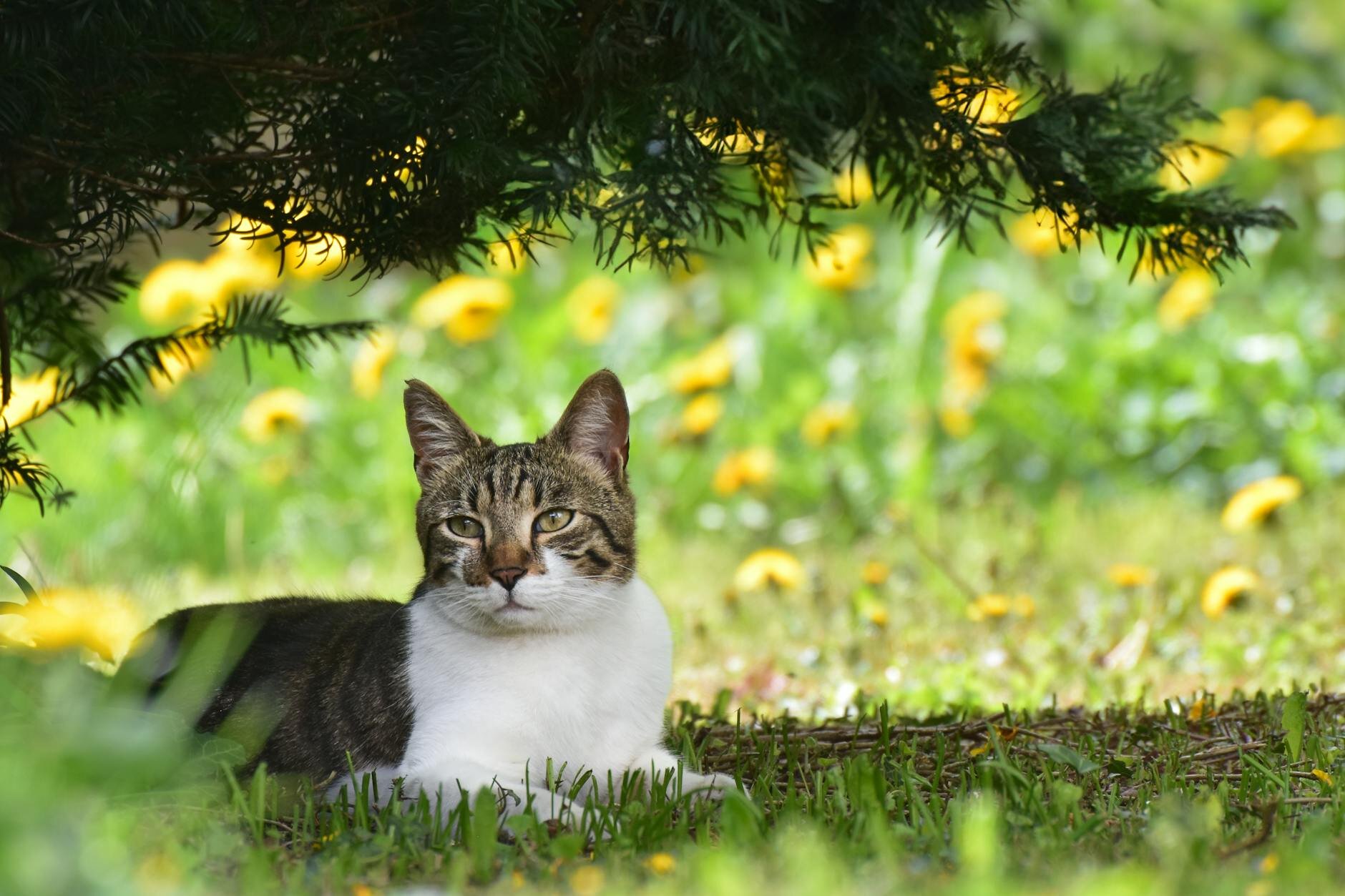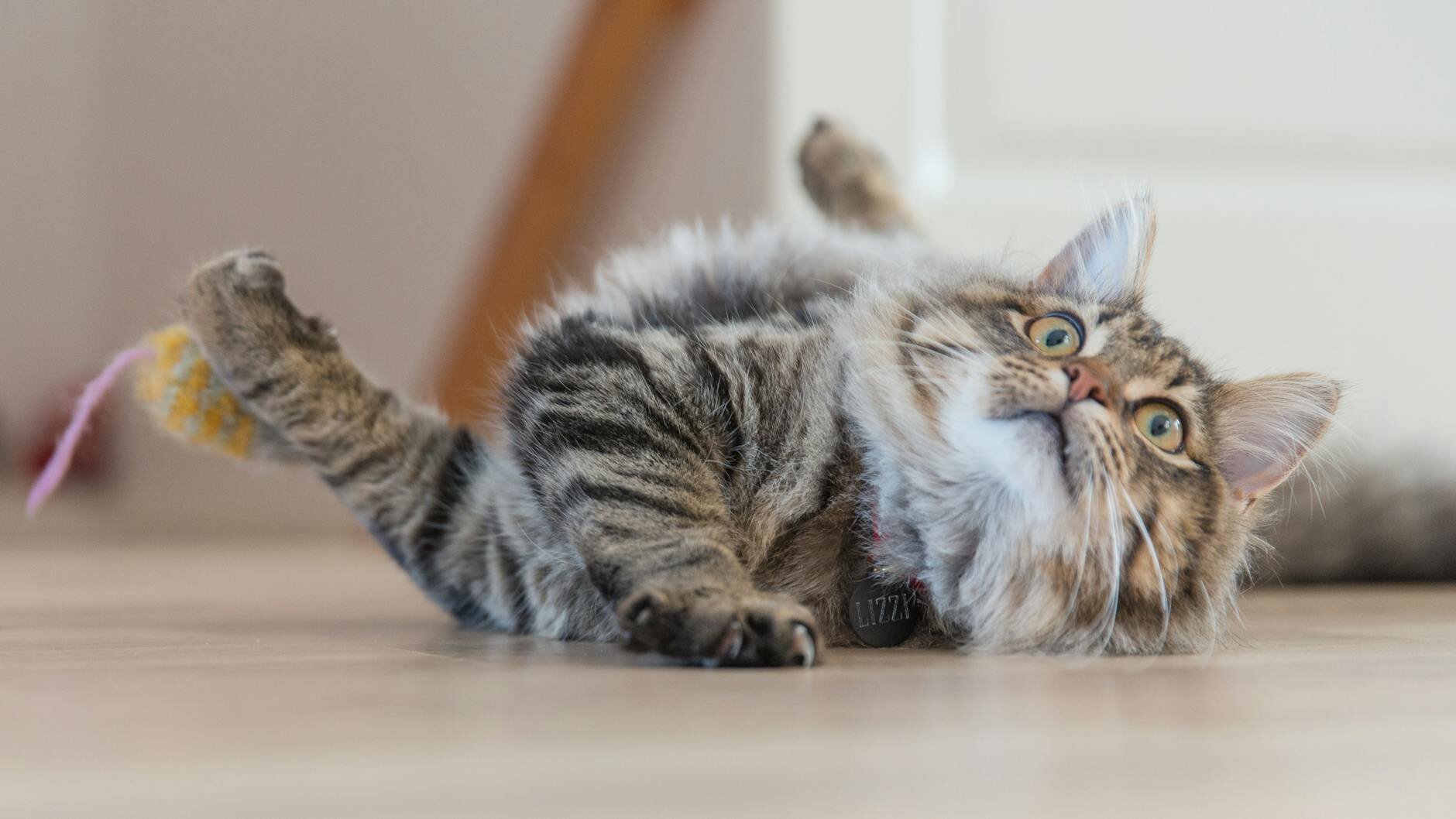Last Updated: 06/08/2025
What is Catnip & Why do Cats Like it
Have you ever wondered why cats go crazy for cat nip? Read from from our vet team on this phenomenon in cats and if you can give your feline cat nip.
Author: Dr Carla Paszkowski BVSc (Hons)
Reading Time: 5 minutes - short read
You've heard about catnip - the mysterious herb known for getting kitties 'high'. But what is catnip? Does catnip really get your cat 'high'? And is catnip safe?
What exactly is catnip?
Catnip, commonly known as catmint or catwort, and botanically known as Nepata Cataria, is a herb from the mint family that hails from Europe and Asia. Renowned for causing bizarre behaviours in cats (well, even more 'bizarre' than usual feline behaviour!) - this leafy green can be given to your cat fresh from the garden, come as pre-dried catnip or even in the form of a liquid catnip spray.
How does catnip work?

Nepetalactone is a volatile oil found in the leaves and stem of the catnip plant, and is the active chemical in catnip responsible for the "high" cats experience. When a cat sniffs catnip, nepetalactone enters their nasal tissue and is then detected by the olfactory bulb (responsible for processing smells) in the brain. This region then signals other regions of the brain, including the amygdala (responsible for emotional responses) and the hypothalamus (responsible for behavioural responses) which triggers the resultant reaction that cats have. Nepetalactone activates the brain similarly to mating pheromones which may explain the almost 'sexual' nature to some exhibited behaviours.
The behavioural effects of catnip on some cats is remarkable and easily observed, which affected cats showing increased excitement and playfulness. The effects of catnip can vary widely from cat to cat however rolling, rubbing, sniffing, drooling and excessive vocalisation are common responses to catnip exposure. Nepetalactone's effects on cats are harmless and short-lived, usually lasting around 10-20 minutes.
Common behavioural responses to catnip:
- Playfulness: Many cats become very active when exposed to catnip, often running, jumping, and chasing imaginary prey.
- Affectionate Behaviour: Some cats might exhibit behaviours such as rubbing, purring, and rolling over when exposed to catnip, often in an attempt to get more of the scent on their bodies.
- Aggression: A smaller number of cats may become aggressive after exposure to catnip, showing behaviours such as growling, hissing, or biting. This reaction can occur if a cat becomes overly excited or if they feel their "territory" is threatened.
- Sedation: On the other end of the spectrum, some cats become more relaxed or even sedated when exposed to catnip. They might lie down, close their eyes, and appear to 'zone out' or fall asleep.
What are the benefits of catnip?
Stimulating your cat's senses with with new or novel scents like catnip is a great way to enrich your cat's environment. Catnip can increase playfulness when sprayed on new toys, and catnip toys also encourage physical activity, which is particularly important for indoor and overweight cats.
Catnip is a useful training tool for encouraging your kitty to use their scratching post. Spray some catnip spray, or sprinkle some catnip-filled toys around the post to encourage your cat to scratch the desired area.
Catnip can also aid in reducing stress and anxiety in cats due to its active ingredient, nepetalactone. This compound stimulates the pleasure-related receptors in a cat's brain, leading to a state of relaxation and contentment. This euphoric state can provide a temporary respite from anxiety and stress, enhancing their mood and promoting playfulness.
However, responses to catnip can vary greatly among cats. It's crucial to monitor your cat's reaction to catnip and use it in moderation. If your cat displays signs of discomfort or adverse reactions, remove the catnip and consult with a veterinarian. Always remember that while catnip can be a useful tool, it's not a substitute for a calm, stable environment and routine, and should not replace veterinary care for ongoing anxiety issues.
Does catnip affect all cats?

Not all cats are affected by catnip. Approximately 20-30% of cats are not affected by catnip at all, and kittens under six months and elderly cats are generally indifferent to the herb.
Genetics seems to play a role in whether your cat is sensitive to the herb or not. Whether a cat will react seems to run in the family. Parents that are unaffected by catnip often have immune offspring.
Aside from our domestic kitties, big cats like lions, tigers and cheetahs also enjoy the effects of this pleasurable stimulant. However, when it comes to humans or dogs, the reaction is quite the opposite and its uses are more effective as a sedative.
Is catnip safe for cats?
Catnip is generally safe for cats of all ages in moderation (however most kittens will not react to it until they are 6 months old), and does not have addictive qualities.
Can you give a cat too much catnip?
Yes, you can give a cat too much catnip. Catnip, while often used as a treat or stimulant for cats, can cause side effects if used excessively. Too much exposure can lead to minor gastrointestinal issues such as vomiting or diarrhoea and can cause catnip to lose its effectiveness due to desensitisation.
Catnip has been shown to increase susceptibility to seizures in rats, so may not be suitable for cats with tendency for seizure activity (e.g. cats with epilepsy). In addition, the active ingredient in catnip (nepetalactone) can be a uterine stimulant so it's use is not recommended in pregnant cats. Always observe your cat when using catnip for any negative reactions. If any distress or aggressive behaviour is observed, it's advised to remove the catnip and consult with a veterinarian.
Introducing catnip to cats
It might surprise you to learn that there are many different ways you can give your cat a lovely dose of catnip. Many soft cat toys are stuffed with catnip, or contain a removable velcro section for replenishing with fresh catnip. You can also purchase a grow-your-own catnip kit, feed your cat treats infused with catnip and even try a catnip spray.
In conclusion, catnip is a safe, effective, and fun way to provide enrichment for the majority of cats. Whether you use it in a toy to encourage exercise, as a spray to aid in training, or simply to provide a few minutes of euphoric fun, its benefits are clear.
Remember that every cat's reaction is unique, so it's important to use it in moderation and observe your pet. Used responsibly, catnip can be a wonderful tool for enhancing your feline friend's happiness and well-being.
Further Reading
Want to read more? Check out our other articles:
Games You Can Play With Your Cat
How To Reduce Stress and Anxiety in Cats
History
Our experts continually monitor the health and wellness space and we update our articles when new information becomes available.
Fri 24 Aug 2018
Written by Dr Carla Paszkowski BVSc (Hons)Dr Carla Paszkowski BVSc (Hons)
Veterinarian
Dr. Carla graduated from the University of Queensland in 2013 with a Bachelor of Veterinary Science and worked for a number of years in small animal clinics across South East Queensland. While Carla enjoys most facets of clinical veterinary work, she holds a special passion for feline medicine, pocket pets, and nutrition.

